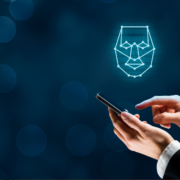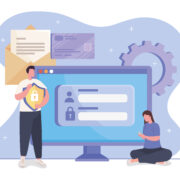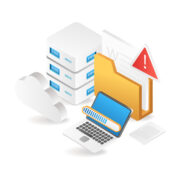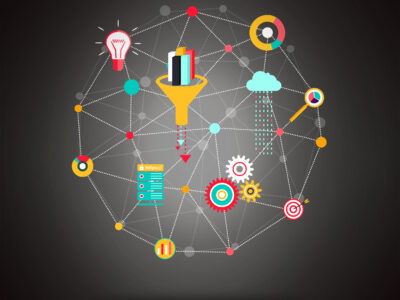Table of Contents
Introduction
Key Takeaways
Dissecting Authentication, Authorization and Encryption
Understanding Digital Security
Top 20 Authentication Systems
Introduction
Authentication systems serve as the frontline defenders of digital security, verifying the identity of users or devices to grant access to protected systems or applications. These systems are indispensable in cybersecurity, thwarting unauthorized access attempts and safeguarding sensitive data from potential breaches.
As threats become more sophisticated, the need for robust authentication solutions has never been more critical. This article explores the top 20 authentication system companies, delving into their key offerings and how they stand out in the industry. From multi-factor authentication to risk-based and adaptive solutions, these companies provide tools necessary for enhancing security and building trust in a digital world.
Key Takeaways
- Understanding the diverse range of authentication methods offered by top companies.
- Exploring the importance of integrated solutions like SSO and risk-based authentication.
- Recognizing the significance of user-friendly policy configurations and centralized management.
Dissecting Authentication, Authorization, and Encryption
Authentication is a process employed by a server when it needs to confirm the identity of the individual or system accessing its resources or site. Similarly, a client uses authentication to verify the server’s identity. The authentication process typically involves the user or system proving their identity to the server or client. Common methods of authentication by a server include user names and passwords, while other methods can include cards, retina scans, voice recognition, and fingerprints. Client authentication often involves the server providing a certificate to the client, in which a trusted third party verifies that the server belongs to the expected entity. Authentication does not dictate the tasks the individual can perform or the files they can access. It simply confirms and verifies the identity of the person or system.
Authorization is a procedure where a server determines if the client has the necessary permissions to use a resource or access a file. Authorization is often linked with authentication so that the server can understand who is requesting access. The type of authentication required for authorization can vary, with passwords sometimes being necessary. In some instances, there is no authorization, and any user may use a resource or access a file simply by requesting it. A large portion of the web pages on the Internet do not require authentication or authorization.
Encryption is the process of converting data into a format that is unreadable by anyone who does not possess a decryption key. Protocols such as the Secure Shell (SSH) and Socket Layer (SSL) are commonly used in encryption processes. SSL is responsible for the secure aspect of ‘http’ sites used in e-commerce sites. Before any data is exchanged, it is encrypted between the client and the server in SSL transactions and SSH sessions. By encrypting the data exchanged between the client and server, sensitive information like social security numbers, credit card numbers, and home addresses can be sent over the Internet with a reduced risk of interception during transit.
Understanding Digital Security
Encryption should be used whenever individuals are providing personal information to register for something or purchase a product. This ensures the individual’s privacy during the communication. When data, like test results or financial statements, is returned to the client by the server and needs to be safeguarded, encryption is additionally widely utilized. Authentication should be used whenever you want to accurately identify who is using or viewing your site. Other commercial websites such as Amazon require individuals to log in before purchasing products so they can accurately identify their customers. Authorization should be used whenever you want to control viewer access to certain pages. For example, students at a university are not authorized to view certain web pages dedicated to professors and administration. Usually, the authorization criteria of a website are specified in the.htaccess file. Authentication and Authorization are often used together. For example, students at a university are required to authenticate before accessing the Student Link. What data they can view depends on the credentials they supply. Students’ access to other students’ data is restricted via the authorization step.
Authentication systems play a pivotal role in fortifying a spectrum of online engagements, prominently including:
Online Banking: Ensuring impregnable transactions through the deployment of multi-factor authentication mechanisms. This sophisticated layering of security protocols fortifies financial interactions against unauthorized access.
Social Media: Safeguarding user profiles by employing rigorous password verification protocols augmented by real-time anomaly detection, fortifying against illicit account access and breaches of personal privacy.
Online Shopping: Upholding the integrity of transactions and safeguarding sensitive user data via robust password authentication mechanisms reinforced by the dynamic security of one-time password verification protocols.
Authentication relies on:
What You Know: Passwords or PINs for identity verification
Who You Are: Biometric features such as fingerprints
What You Have: Physical assets like cards and tokens
Authentication technology continually evolves, prompting businesses to transcend traditional password-based methods and embrace innovative approaches to enhance user experience. Biometric authentication, for instance, eliminates the need for complex passwords, transforming how users access systems and services. The demand for diverse user authentication technologies, spanning both online and physical systems, is on the rise. From access control to the integration of e-commerce functionalities, the motivation to authenticate users stems from various business imperatives.
Understanding that passwords alone are insufficient for robust user authentication is paramount for organizations. A plethora of authentication technologies exists, catering to a wide spectrum of authentication needs across different activities and industries.
Insufficient authentication measures pave the way for cybercriminals to exploit system vulnerabilities, resulting in data breaches such as high-profile cases that happened at Adobe, Equifax, and Yahoo. During the Yahoo breach from 2012 to 2016, hackers breached user accounts, accessing contacts, calendars, and private emails. Similarly, the Equifax breach in 2017 exposed credit card data of over 147 million consumers, highlighting the urgency of secure authentication processes to mitigate risks and protect organizational assets.
These breaches serve as stark reminders of the pressing need for robust cybersecurity measures. In December 2020, the SolarWinds supply chain attack compromised government and private sector entities, including Microsoft and FireEye. The Colonial Pipeline ransomware attack in May 2021 disrupted fuel supply to the East Coast, emphasizing the criticality of cybersecurity in vital infrastructure. Additionally, the Facebook data breach in April 2021 and the Microsoft Exchange Server breach in March 2021 underscored the ongoing challenges of safeguarding user data and the importance of timely security patching. Furthermore, the JBS USA ransomware attack in May 2021 and the Ubiquiti Networks data breach in January 2021 highlighted the vulnerability of critical infrastructure and the security risks associated with IoT devices and cloud-based services. These examples serve as a stark reminder of the critical role that authentication plays in protecting systems and data from cyber threats.
Each authentication system has its unique attributes, benefits, and potential limitations. Here’s an overview of methods of authentication:
- Single-Factor Authentication (SFA): SFA is a basic form of authentication that uses a single set of credentials, usually a username and password, to gain system access. Its simplicity, however, makes it vulnerable to credential theft and hacking.
- Two-Factor Authentication (2FA): 2FA enhances security by necessitating two distinct authentication factors, such as a password (something you know) and a security token (something you possess). This dual-factor requirement significantly bolsters security as unauthorized access would require breaching both factors.
- Three-Factor Authentication (3FA): 3FA, an extension of 2FA, demands credentials from three separate categories: something you know, have, and are (often a biometric feature). While it offers superior security, its complexity limits its widespread adoption.
- Multi-Factor Authentication (MFA): MFA is a broad term that includes any authentication process requiring two or more factors. It encompasses both 2FA and 3FA and is favored for its comprehensive security features.
- Single Sign-On Authentication (SSO): SSO allows users to access multiple accounts and applications with a single set of credentials, enhancing user experience, streamlining authentication processes, and reducing administrative tasks.
- One-Time Password (OTP): OTP creates a unique password for a single login session or transaction. It’s often used alongside MFA to provide an extra security layer.
- Passwordless Authentication: This method does away with passwords, instead using registered devices or tokens for user authentication. It boosts security, simplifies the user experience, and lessens IT administration tasks.
- Certificate-Based Authentication (CBA): CBA uses digital certificates to authenticate users, devices, or machines. It’s frequently part of a multi-factor authentication process and ensures secure identification.
- Biometric Authentication: Biometric authentication uses unique physical traits like fingerprints, retinal scans, or facial recognition to verify user identities. While it provides high security and user convenience, it necessitates advanced technology for implementation.
Top 20 Authentication Systems
Authentication systems are indispensable for ensuring the security, privacy, and integrity of digital transactions and data. By adopting robust authentication measures, organizations and individuals mitigate the risks associated with unauthorized access and data breaches. While our feature highlights the top authentication systems based on current trends and evaluations, it’s crucial to recognize that the ranking may change over time as technologies advance and user needs evolve. Here are 20 notable authentication systems, each with its unique strengths and capabilities:
1. Okta Identity Cloud
Okta is a leading cloud-based identity and access management (IAM) platform that secures access to applications and data for both employees and customers. The company provides a comprehensive suite of products and services, including single sign-on (SSO), multi-factor authentication (MFA), user management, and API access management.
- Okta’s Identity Cloud offers a flexible and extensible platform to authenticate users and secure applications, supporting various authentication methods including social, enterprise, and passwordless.
- The platform processes over 50 million authentications daily and provides 99.99% uptime for every customer.
- Okta’s Universal Directory enables centralized user management, while Lifecycle Management automates user provisioning and deprovisioning across applications.
- The company’s API Access Management solution secures APIs and application backends, allowing only authorized users and applications to access resources.
- Okta’s Adaptive MFA enforces a second level of security based on contextual factors like location, network, and device.
- In 2021, Okta acquired Auth0 for $6.5 billion, further expanding its identity platform and developer tools.
2. Cisco Duo
Cisco Duo is a leading provider of trusted access solutions, offering two-factor authentication (2FA), single sign-on, and endpoint visibility to secure access to applications and devices. The company was acquired by Cisco in 2018 and continues to innovate its authentication platform to protect against evolving threats.
- Duo’s adaptive authentication policies evaluate user, device, and application context to determine the appropriate level of security for each access attempt.
- The platform offers a range of authentication factors including push notifications, one-time passwords, and hardware tokens to provide strong, phishing-resistant authentication.
- Duo’s Trusted Access platform integrates with thousands of applications, including cloud, on-premises, and custom-built, to secure access for employees, contractors, and partners.
- The company’s Endpoint Visibility feature provides real-time information about the devices accessing corporate resources, allowing IT teams to enforce security policies and detect anomalies.
- Duo’s Risk-Based Authentication leverages machine learning to analyze access attempts and step up authentication for high-risk scenarios, such as impossible travel or suspicious locations.
- With over 25,000 customers worldwide, Cisco Duo has a proven track record of securing access and preventing data breaches in organizations of all sizes and industries.
3. HID DigitalPersona
HID DigitalPersona is a leading provider of advanced multi-factor authentication solutions, offering a wide array of authentication methods to secure access for authorized users across networks and cloud applications. Their software combines security and usability, empowering organizations to quickly and securely log into Windows workstations, corporate VPNs, and various applications using biometrics, mobile devices, smart cards, and more.
- HID DigitalPersona’s MFA solution provides passwordless desktop authentication that is easy to deploy, adopt, and manage, enabling rapid and secure log-in to Windows, networks, and applications via biometrics, mobile devices, physical access badges, smart cards, and security keys.
- The software supports a broad range of form factors in the industry, including security keys, smart cards, physical access cards, Bluetooth devices, hardware and software tokens, passkeys, and more, catering to diverse enterprise needs across industries like financial services, healthcare, manufacturing, and retail.
- It seamlessly integrates with Windows Active Directory, Azure Active Directory, or Lightweight Directory Services (LDS) server, utilizing built-in tools for user management and policy deployment via Group Policy Object (GPO).
- HID DigitalPersona offers a user-friendly interface for easy self-enrollment of credentials and authentication policy enforcement, enhancing user experience and security compliance.
- The software supports FIDO2-certified authentication devices like HID Crescendo smart cards and security keys, enabling secure multi-factor authentication for VPNs, RDP Gateways, and other systems where RADIUS is used for authentication.
- With features like DigitalPersona ADFS extension, the software enables the addition of multi-factor authentication to ADFS deployments, including biometric authentication such as face and fingerprint recognition, enhancing security and compliance measures.
4. Microsoft Entra ID
Microsoft Entra ID is a cloud-based identity and access management solution that secures access to applications and resources for organizations of all sizes. The platform offers a comprehensive suite of authentication methods, single sign-on, and user lifecycle management capabilities to protect against identity-related threats.
- Microsoft Entra ID supports a range of authentication methods, including passwordless options like Windows Hello, Microsoft Authenticator, and FIDO2 security keys, providing the most secure sign-in experience.
- The solution integrates with on-premises Active Directory, enabling hybrid users to access both cloud and on-premises resources while enforcing password protection policies.
- Microsoft Entra ID’s multifactor authentication (MFA) adds an extra layer of security beyond just a username and password, prompting users for additional verification factors like push notifications, one-time codes, or phone calls.
- The platform’s self-service password reset feature allows users to update their passwords from any device, reducing helpdesk calls and improving productivity.
- Microsoft Entra ID offers adaptive access controls, evaluating user, device, and location context to determine the appropriate level of authentication required for each access attempt.
- Used by millions of organizations worldwide, Microsoft Entra ID helps secure access to cloud and on-premises resources, including Microsoft 365, Azure, and thousands of other SaaS applications.
5. Yubico
Yubico is a leading provider of hardware security keys that offer phishing-resistant multi-factor authentication to secure access to computers, mobile devices, servers, and internet accounts. The company’s YubiKey devices support various authentication protocols, including one-time passwords, public-key cryptography, and the FIDO2 and Universal 2nd Factor (U2F) standards.
- YubiKey devices generate strong, unique one-time passwords for each login, preventing account takeovers even if users click on fraudulent links or enter credentials on fake websites.
- The YubiKey 5 series supports FIDO2 passwordless authentication, allowing users to securely log in to online services without a password using the device’s built-in public/private key pair.
- Yubico’s Security Key is a lower-cost alternative that focuses on FIDO2/WebAuthn and FIDO/U2F support, providing a phishing-resistant authentication option for organizations on a budget.
- YubiKeys can be used across various platforms, including Windows, macOS, Linux, Chrome OS, iOS, and Android, ensuring compatibility with an organization’s existing technology stack.
- Yubico’s hardware security keys are trusted by some of the world’s largest brands, including Google, Amazon, Microsoft, Twitter, and Facebook, to secure employee and end-user accounts.
- Independent studies have shown that deploying YubiKeys can reduce the risk of account takeovers by 99.9%, decrease password-related helpdesk tickets by 75%, and deliver a 203% 3-year ROI.
6. Google Authenticator
Google Authenticator is a software-based authenticator developed by Google, providing users with a random code for confirming their identity during logins to supported sites and services. It generates unique six to eight-digit codes that users enter along with their credentials to enhance security and prevent unauthorized access.
- Google Authenticator offers an additional layer of security through two-factor authentication, requiring users to provide a time-based one-time password (TOTP) along with their regular login credentials.
- The app generates unique codes that expire after a short period, enhancing security by ensuring that each login attempt requires a fresh code for verification.
- Users can configure Google Authenticator with various services and platforms, including Access Manager Plus, to enforce two-factor authentication and strengthen access controls.
- In case of device loss or app deletion, users can still access their accounts by following a recovery process that involves confirming their identity through alternative means.
- Google Authenticator supports multiple authentication protocols, making it versatile and compatible with a wide range of tech stacks, both legacy and modern, for seamless integration and enhanced security measures.
7. Falcon Identity Protection
CrowdStrike’s Falcon Identity Protection is an endpoint protection platform that secures identities and prevents credential-based attacks. The solution offers multi-factor authentication, single sign-on, and password management capabilities to protect against advanced threats and data breaches.
- Falcon Identity Protection provides real-time visibility and control over user access to critical resources, allowing organizations to enforce granular access policies based on user, device, and application context.
- The platform integrates with various identity providers and supports a range of authentication factors, including push notifications, one-time passwords, and biometrics, to provide strong, phishing-resistant authentication.
- CrowdStrike’s proprietary threat intelligence and machine learning algorithms analyze user behavior and access patterns to detect and respond to suspicious activities, preventing credential theft and lateral movement.
- Falcon Identity Protection seamlessly integrates with the CrowdStrike Falcon platform, providing a unified solution for endpoint protection, threat hunting, and incident response, enabling organizations to streamline their security operations.
- The solution offers advanced reporting and analytics capabilities, allowing security teams to monitor user access, identify risky behaviors, and demonstrate compliance with industry regulations and standards.
- CrowdStrike’s Falcon Identity Protection is trusted by organizations worldwide to protect against identity-related threats, with a proven track record of preventing data breaches and reducing the attack surface.
8. IBM Security Verify
IBM Security Verify is a comprehensive identity and access management solution that secures access to applications and data for enterprises across various industries. The platform offers multi-factor authentication, single sign-on, user lifecycle management, and advanced security features to protect against identity-related risks.
- IBM Security Verify provides a range of authentication factors, including push notifications, one-time passwords, and biometrics, to ensure strong, phishing-resistant authentication for users.
- The solution’s risk-based adaptive access controls evaluate user, device, and location context to determine the appropriate level of authentication required for each access attempt, enhancing security without compromising user experience.
- IBM’s AI-powered threat detection capabilities analyze user behavior and access patterns to identify and respond to suspicious activities, preventing credential theft and unauthorized access.
- The platform integrates with various identity providers and supports a wide range of applications, including cloud, on-premises, and custom-built, ensuring seamless integration with an organization’s existing technology stack.
- IBM Security Verify offers advanced reporting and analytics features, allowing security teams to monitor user access, identify risky behaviors, and demonstrate compliance with industry regulations and standards.
- With a global footprint and a proven track record of securing some of the world’s largest enterprises, IBM Security Verify is a trusted solution for organizations looking to protect against identity-related threats and maintain business continuity.
9. RSA SecureID Access
RSA SecureID Access is a leading multi-factor authentication and identity assurance solution that offers a range of authentication factors, including hardware tokens, mobile apps, and biometrics, to secure access to critical resources. The platform provides risk-based adaptive authentication, access policies, and advanced security features to prevent fraud and ensure secure user authentication.
- RSA SecureID Access offers a comprehensive suite of authentication factors, including hardware tokens, mobile apps, and biometrics, to provide strong, multi-layered security for user authentication.
- The platform’s risk-based adaptive authentication evaluates user behavior, device posture, and contextual factors to determine the appropriate level of authentication required for each access attempt, enhancing security without compromising user experience.
- RSA SecureID Access integrates seamlessly with various applications and systems, enabling organizations to secure access to cloud, on-premises, and custom-built resources with ease.
- The solution’s advanced reporting and analytics capabilities allow security teams to monitor user access, detect anomalies, and respond to security incidents in real-time, ensuring a proactive approach to security management.
- With a proven track record of securing access for organizations worldwide, RSA SecureID Access is trusted by enterprises to protect against identity-related risks, prevent data breaches, and comply with industry regulations and standards.
10. Authy
Authy is a leading two-factor authentication app that enhances account security by generating one-time passwords for secure logins across various online services and applications. The app offers cross-device synchronization, backup of authentication tokens, and supports various authentication methods to protect user accounts effectively.
- Authy provides a user-friendly interface for easy setup and management of two-factor authentication, ensuring a seamless and secure login experience for users.
- The app supports authentication for a wide range of online services and applications, offering a versatile solution for securing access to various platforms.
- Authy offers cross-device synchronization, allowing users to access their authentication tokens on multiple devices for added convenience and security.
- With backup functionality, Authy ensures that users can recover their authentication tokens in case of device loss or app deletion, preventing lockout from accounts.
- Authy’s support for various authentication methods, including time-based one-time passwords (TOTP) and push notifications, provides flexibility and robust security for user authentication.
- Trusted by millions of individuals and businesses, Authy continues to be a reliable and effective solution for enhancing account security and preventing unauthorized access.
11. Ping Identity Corporation
Ping Identity Corporation is a leading provider of identity and access management solutions that enable secure access to applications and data for both employees and customers. The company offers a comprehensive suite of products and services, including single sign-on, MFA, user management, and API access management, to protect against identity-related threats.
- Ping Identity’s Identity Cloud offers a flexible and extensible platform to authenticate users and secure applications, supporting various authentication methods including social, enterprise, and passwordless.
- The platform processes over 50 million authentications daily and provides 99.99% uptime for every customer.
- Ping Identity’s Universal Directory enables centralized user management, while Lifecycle Management automates user provisioning and deprovisioning across applications.
- The company’s API Access Management solution secures APIs and application backends, allowing only authorized users and applications to access resources.
- Ping Identity’s Adaptive MFA enforces a second level of security based on contextual factors like location, network, and device.
- Used by millions of organizations worldwide, Ping Identity helps secure access to cloud and on-premises resources, including Microsoft 365, Azure, and thousands of other SaaS applications.
12. Fusion Auth
Fusion Auth is a cutting-edge authentication and authorization platform designed by developers for developers, offering a customizable and scalable solution for user management across various applications. With Fusion Auth, developers can easily integrate secure authentication features into their applications, ensuring robust user authentication and authorization.
- Fusion Auth offers a range of authentication options including username/password, social logins, and passwordless login, enhancing user experience and security.
- Developers can define detailed roles, permissions, and access policies to ensure precise control over user actions within applications.
- Fusion Auth supports multi-tenancy, enabling the management of multiple applications and user bases within a single instance for enhanced efficiency.
- It seamlessly integrates with various databases like PostgreSQL, MySQL, and MongoDB, providing versatility in data storage options.
- Fusion Auth prioritizes security with features such as password hashing, two-factor authentication, and compliance with industry standards like OAuth 2.0 and OpenID Connect, ensuring robust protection for user credentials and data.
13. OneLogin
OneLogin is a leading provider of identity and access management solutions, offering a comprehensive suite of tools to secure user identities across various applications and devices. With a focus on security, convenience, and scalability, OneLogin empowers organizations to streamline authentication processes effectively.
- OneLogin’s SSO authentication system simplifies access to multiple applications with a single set of credentials, enhancing productivity and security for users accessing cloud and on-premises applications.
- Its MFA feature adds an extra layer of security by requiring users to provide multiple authentication factors, such as passwords, biometrics, or OTPs, ensuring robust protection against unauthorized access.
- OneLogin offers context-aware access management, allowing organizations to define policies based on user context, device, location, and other parameters to ensure secure access to sensitive data and applications.
- OneLogin Desktop provides users with secure profiles on laptops and desktops, enabling seamless access to corporate apps via the OneLogin SSO portal without the need for repeated logins, enhancing user experience and security.
- It allows organizations to configure and assign authentication factors to users, providing flexibility in authentication methods and enhancing security through policy-based access control.
- OneLogin is pre-integrated with a wide range of web applications, with new apps continuously added, offering organizations the flexibility to secure access to various applications efficiently and securely.
14. Keyless
Keyless is a pioneering biometric authentication company that offers a unique approach to secure user identity verification across multiple devices without storing biometric data anywhere. By leveraging Zero-Knowledge Biometrics™, Keyless combines the best of device-native and server-side systems, providing a privacy-preserving and frictionless authentication experience.
- Keyless’ patented Zero-Knowledge Biometrics™ technology enables user identity verification without storing biometric data on any server, ensuring maximum privacy protection.
- Keyless supports multi-factor authentication, allowing organizations to enhance security by requiring users to provide multiple authentication factors, such as biometrics and one-time passwords.
- It offers passwordless authentication solutions, eliminating the need for users to remember and manage complex passwords, improving security and user experience.
- Keyless seamlessly integrates with popular identity and access management platforms like Okta and Ping Identity, enabling organizations to enhance their existing authentication infrastructure with advanced biometric capabilities.
- Keyless’ architecture is designed to be highly scalable and secure, ensuring that organizations can securely authenticate large user bases without compromising performance or privacy[3].
- Its solutions are compliant with industry standards such as FIDO2, ensuring interoperability with a wide range of devices and applications.
15. Thales
Thales is a trusted leader in digital identity and security solutions, providing cutting-edge technologies to secure digital interactions for businesses and governments worldwide. With a focus on data protection, access control, and encryption, Thales offers comprehensive solutions to safeguard identities and ensure secure communications.
- Thales offers a comprehensive suite of identity access and management systems that administer, monitor, and manage strong authentication deployments, ensuring secure access control across organizations.
- By combining authentication with encryption and cryptographic key management, Thales addresses high-priority security needs, providing robust protection for data in virtualized and cloud environments.
- Thales tailors its solutions to meet industry-specific requirements, serving leading organizations in finance, retail, healthcare, and more, with specialized authentication solutions to protect sensitive data and transactions.
- Thales is a market leader in financial data security, safeguarding transaction security for major financial institutions and central banks globally, ensuring the integrity and confidentiality of financial data.
- Thales solutions help healthcare organizations achieve and maintain compliance by protecting sensitive patient records, medical transactions, and intellectual property, ensuring the security and privacy of healthcare data.
- Trusted by governments worldwide, Thales secures mission-critical information, controls access, and safeguards communications, providing robust data protection solutions tailored to the unique security needs of government entities.
16. LastPass
LastPass is known for its robust password management solutions that prioritize security and convenience for individuals and businesses. With a focus on safeguarding digital identities, LastPass offers cutting-edge features to enhance password security and streamline access management.
- LastPass provides a secure platform for storing and managing passwords, enabling users to generate strong, unique passwords for each account and securely access them across devices.
- It supports multi-factor authentication, adding an extra layer of security by requiring users to provide additional verification methods like biometrics or one-time passwords.
- LastPass allows users to securely share passwords with trusted individuals and set up emergency access, ensuring continuity of access to critical accounts in unforeseen circumstances.
- It offers a password generator tool that creates complex, randomized passwords to enhance security and protect against password-related vulnerabilities.
- It enables seamless syncing of passwords and data across multiple devices, ensuring users have access to their credentials whenever and wherever they need them.
- LastPass provides security auditing features that analyze password strength, identify weak or duplicate passwords, and offer recommendations to improve overall account security.
17. OneSpan
OneSpan is a globally recognized provider of digital identity verification and anti-fraud solutions, offering state-of-the-art technologies to secure digital interactions and combat fraud across diverse industries. With a strong emphasis on mobile app security, e-signatures, and multi-factor authentication, OneSpan empowers businesses to enhance customer trust and meet regulatory standards.
- OneSpan offers advanced mobile app shielding and runtime application self-protection (RASP) technologies to protect mobile apps from tampering and other security threats.
- It provides secure and legally binding e-signature solutions, enabling organizations to digitize document signing processes securely and efficiently.
- OneSpan specializes in risk analytics and fraud prevention tools, helping organizations detect and prevent fraudulent activities through advanced analytics and real-time monitoring.
- It focuses on deploying trusted digital identities, ensuring secure proof of identity and authentication for individuals and devices in the digital realm.
- It has been acknowledged as the top eSIM/iSIM platform provider in Juniper Research’s Global eSIMs & iSIMs market report, showcasing its expertise in secure digital identity solutions.
- OneSpan is at the forefront of responsible biometrics, aiming to build trust between providers and users while addressing key concerns in biometric authentication.
18. CyberArk
CyberArk is a leading provider of privileged access management solutions, offering comprehensive identity security to protect against cyber threats and data breaches. With a focus on securing identities across on-premises, cloud, and hybrid environments, CyberArk empowers organizations to prevent, detect, and respond to attacks.
- CyberArk’s privileged access security solutions safeguard privileged accounts, credentials, and secrets, preventing unauthorized access and misuse of high-risk entitlements.
- CyberArk offers cloud-native privileged access management solutions that secure identities and protect against threats in cloud environments, ensuring seamless integration with leading cloud platforms.
- CyberArk’s Endpoint Privilege Manager helps organizations reduce risks associated with excessive user privileges on endpoints, enforcing least-privilege principles and preventing malware from exploiting privileged accounts.
- Its Privileged Session Manager enables secure remote access to privileged accounts, providing visibility, control, and recording capabilities to mitigate insider threats and external attacks.
- CyberArk’s Privileged Threat Analytics solution leverages machine learning and behavioral analytics to detect and respond to suspicious privileged account activities, helping organizations identify and mitigate potential threats in real-time.
- CyberArk’s Secure DevOps offerings help organizations embed security into their DevOps processes, protecting against risks associated with machine identities, secrets, and privileged access in modern software development environments.
19. Symantec VIP
Symantec VIP provides multi-factor authentication solutions, offering robust security measures to protect user identities and prevent unauthorized access to online accounts. With a focus on convenience and reliability, Symantec VIP empowers organizations to secure their digital assets and comply with industry regulations.
- It supports various multi-factor authentication methods, including push notifications, one-time passwords, and biometrics, ensuring secure access to applications and data.
- It integrates seamlessly with a wide range of applications and platforms, including popular cloud-based services and enterprise software, enabling organizations to enhance security without disrupting existing workflows.
- Its infrastructure is designed to be highly scalable and reliable, ensuring that organizations can securely authenticate large user bases without compromising performance or availability.
- Symantec VIP’s solutions are compliant with industry standards such as FIDO2 and SAML, ensuring interoperability with a wide range of devices and applications.
- It offers a centralized management console that allows administrators to easily configure, deploy, and monitor authentication policies across the organization, simplifying the management of user identities and access rights.
- It provides comprehensive reporting and analytics capabilities, enabling organizations to monitor authentication activity, detect suspicious behavior, and generate compliance reports to meet regulatory requirements.
20. Entrust
Entrust is a trusted provider of identity and security solutions, offering advanced technologies to safeguard digital interactions and protect sensitive data. With a focus on accelerating growth, ensuring compliance, and building trust in every digital interaction, Entrust empowers organizations to secure their identities and assets effectively.
- Its solutions enable Zero Trust strategies, ensuring secure interactions and access control by continuously verifying trust in users and devices.
- Entrust offers a comprehensive suite of identity protection solutions, including secure payments and data encryption, to safeguard identities and sensitive information from cyber threats.
- Entrust is trusted by some of the world’s largest companies to secure their organizations and serve their customers, highlighting the reliability and effectiveness of its security solutions.
- Its solutions lay a secure foundation that accelerates organizational growth by protecting identities, payments, and data, enabling businesses to thrive in a rapidly evolving digital landscape.
- Entrust’s Cybersecurity Institute provides critical insights and education on security concepts through newsletters, explainer videos, and podcasts, offering valuable resources for staying informed about the latest cybersecurity trends and best practices.
- Entrust has been named a Challenger for Access Management, showcasing its commitment to putting secure digital transformation within reach and providing innovative solutions to meet evolving security challenges.
Future of Authentication: Securing a Digital World
As we look ahead, authentication systems are poised for continued innovation and evolution. The top authentication system companies are at the forefront of this transformation, driving advancements that will shape the future of secure access and identity management.One key trend is the increasing adoption of passwordless authentication methods. With the rise of biometrics, security keys, and mobile push notifications, users can now securely access applications and services without relying on traditional, vulnerable passwords. This shift not only enhances security but also improves the user experience by eliminating the need to remember and manage complex credentials.
Another significant development is the integration of artificial intelligence (AI) and machine learning (ML) into authentication systems. These technologies enable adaptive and risk-based authentication, where access decisions are made based on real-time analysis of user behavior, device characteristics, and contextual factors. By continuously evaluating risk, AI-powered authentication systems can provide a frictionless experience for trusted users while stepping up security for high-risk scenarios, effectively mitigating the threat of unauthorized access.
The growing emphasis on identity governance and lifecycle management is also shaping the future of authentication. As organizations manage an ever-increasing number of users, devices, and applications, the need for centralized control and visibility has become paramount. Leading authentication system companies are addressing this challenge by offering comprehensive identity platforms that streamline user provisioning, access control, and compliance reporting, enabling organizations to maintain a secure and efficient digital ecosystem.
Furthermore, the convergence of physical and digital security is driving the development of unified authentication solutions. By integrating access control systems with identity and access management platforms, organizations can ensure a seamless and secure experience for users across both physical and virtual environments. This convergence not only enhances overall security but also optimizes operational efficiency and reduces the complexity of managing multiple systems. The top authentication system companies are at the forefront of this critical field, providing innovative solutions that protect against malicious threats while enabling organizations to thrive in a connected world.





















Suggest that you create an industry forum where all senior R&C leaders can be invited for a panel discussion around Risk & Compliance Governance which would cover all the pointers covered in this comprehensive articles.